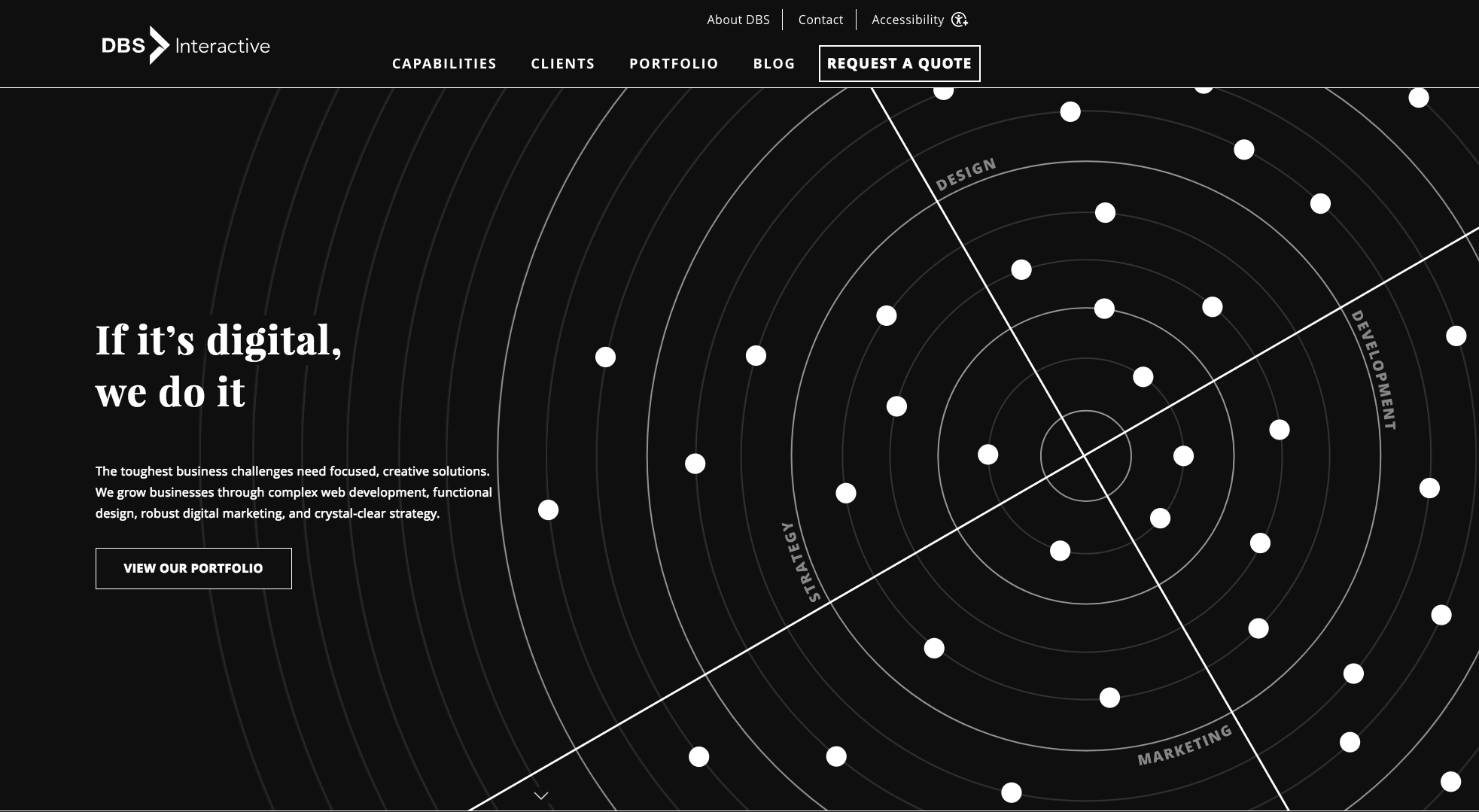

Why Web Accessibility Should Not Be Cost Prohibitive
Why we made our DBS website meet the strictest digital accessibility standards
The internet isn’t accessible enough.
A lack of digital accessibility can reduce your website's audience by 61 million Americans. External Link. Opens in new window. who report being disabled.
In addition, recent EU legislation foreshadows a not-too-distant future where America-based websites are subject to more severe compliance legislation and enforcement.
That's why, in honor of Global Accessibility Awareness Day, we've taken steps to upgrade our website beyond best practices for digital accessibility.
When I was disabled following a debilitating accident, the internet was my only window into the world. It’s where my love of the internet and motivation to found DBS began. My passion and approach to accessibility for everyone on the web has always been one of the core values of DBS. It's why we've been launching 508(c)-compliant websites since our inception in 2000.
Does it take extra work to make a site accessible to as many people as possible? Sure, but not that much–especially when you consider the worldwide reach of websites. The more relevant question is, why wouldn’t you put in a little extra work to reach 61 million more people?
For these reasons (and more), we have upgraded our website to meet the toughest standards of the international World Wide Web Consortium (W3C). Our website is now compliant to their "AAA" standard.
Moreover, as of January 1, 2018, every website we build will meet the design and development criteria within the AA standard.

DBS website's white-on-black and black-on-white high-contrast modes
One way our website exceeds accessibility best practices is offering two different high-contrast modes: white-on-black, and black-on-white (see above). Why? Because someone who is colorblind may prefer to view our site in black and white.
Another way is keyboard navigation. Now, for folks with limited mobility of their hand(s), our site can be navigated completely via keyboard. This also helps visitors using screen readers to follow the links on our pages.
When we do a video, we’ll include an American sign-language translation and also a text transcript. Now visitors using screen readers will have no trouble finding text alternatives to all of our visual and interactive content.
The Question I Get Asked the Most: Am I Legally Required to Make my Website Accessible?
About 15 years ago, Target was sued. External Link. Opens in new window. by the National Federation of the Blind. External Link. Opens in new window. because its website was not accessible to blind and visually impaired users. The company tried to have the federal case dismissed, but the judge refused. Rather than roll the dice in a trial, Target paid $6 million to settle the case out of court.
Just last year, Winn Dixie was sued, and lost, for having an inaccessible website. The case mandated Winn Dixie to update their website until it met WCAG 2.0 AA guidelines.
Today, many publicly-traded companies try to comply with the AA requirements of the W3C’s Web Content Accessibility Guidelines (WCAG 2.0). But their efforts often have mixed results.
To be fair, the U.S. Department of Justice has not issued guidelines on how digital accessibility falls under the ADA. But the fact is, ADA is Civil Rights law, and that’s why in 2017 alone there were over 800 lawsuits filed against companies whose websites were not accessible to people with disabilities, which is a violation of the ADA.
What bothers me the most? So many companies have a commitment to diversity, yet they don’t take the few extra steps needed to make their website accessible.
Companies may simply not know what to do because their corporate diversity folks don’t understand ADA compliance in terms of digital accessibility. They don’t know what to check on their websites, or how to check it. This is a symptom of bureaucracy within corporate America. People aren’t talking with each other, and that's how these problems and liabilities linger.
What Are We Going to Do About It?
When we started these discussions at DBS, we knew it wasn’t enough to just talk about the importance of digital accessibility; we had to live it, to exemplify it. Improving the accessibility and compliance of our own website was a natural first step in achieving that.
Stay tuned. We’ve got more great information coming out to help explain the what, the why, and the how around digital accessibility. In addition to our accessible web design, we’ll also be announcing some new service offerings in the accessible email and accessible marketing space.
There are very few companies out there that specialize in developing websites that are ADA compliant. Depending on who you choose, it can be outrageously expensive.
At DBS, we believe it shouldn’t be cost prohibitive to make the web a fair and inclusive place.



